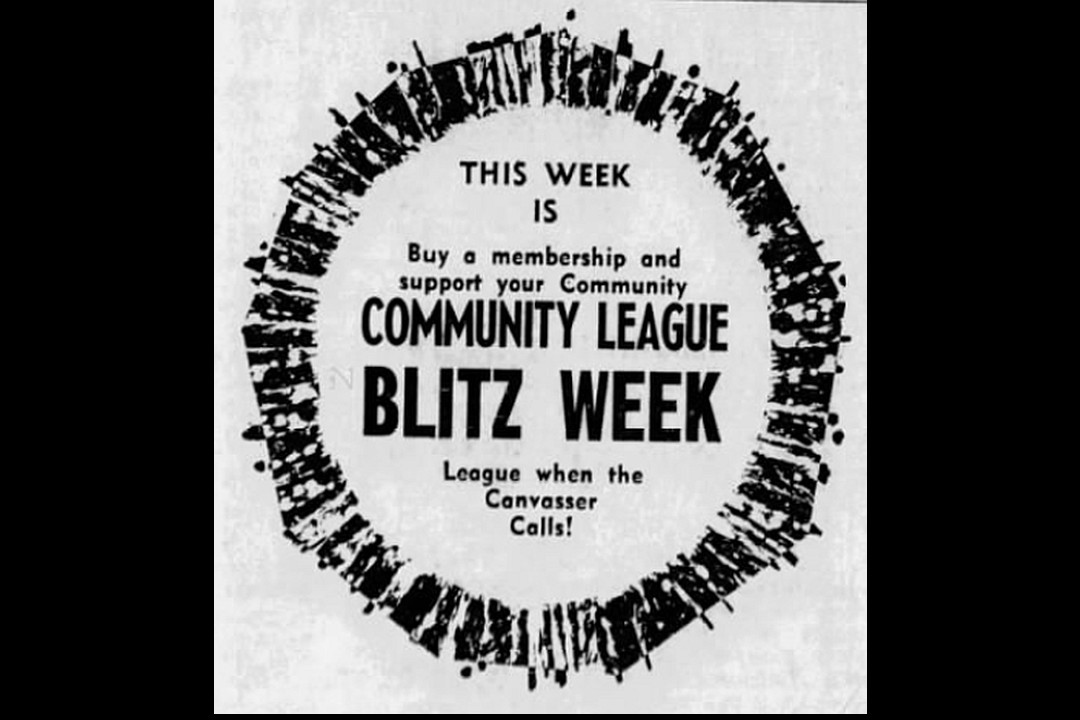On this day in 1968, Edmonton was celebrating its community leagues.
While there are various forms of neighbourhood councils, recreational societies, and other civic groups across the world, the city's community leagues are unique. And they owe their existence to how Edmonton grew in the early 1900s.
Edmonton's population and prosperity were exploding in this period. New residents, who were flooding into the fledgling city, needed a place to live. This led to a frenzy of new construction and land speculation, as well as to infrastructure being built. New subdivisions sprang up on both sides of the river, with dozens more planned.
But the growth didn't last. By the early 1910s, the economic fervour and population boom began to cool. Many of the planned subdivisions never graduated beyond a map in a planner's office. As a result, several of the neighbourhoods built during this time were separated from the city proper by tracts of undeveloped land. Meanwhile, the city tightened budgets to maintain the infrastructure that had been built in anticipation of more people who never came. The city looked fractured, and many neighbourhoods felt ignored by the city's leadership.
It was in this environment that the first community league was formed in 1917, largely through the efforts of Jessie Montgomery, a university librarian, and George M. Hall, who had moved to Edmonton from the U.S. Dubbed the 142nd Street District Community League (later renamed the Crestwood Community League), and inspired by the City Club movement in the U.S., the new organization aimed to create a united voice for the community to advocate for better infrastructure. Soon, it widened its mandate and began holding social events and working to meet the recreational needs of its residents.
Of course, the 142nd Street District Community League wasn't the first social organization in Edmonton. But many of those existing organizations were dedicated to a particular interest, like horticulture, or separated by social class. One of the most striking features of Edmonton's first community league was its openness: Membership was available to anyone living in the district, not restricted by class, religion, or ethnic background. The league was also open to both men and women, which was still uncommon at the time.
Other neighbourhoods watched the 142nd Street District Community League and saw how effective it was. Within three years, eight other neighbourhoods established their own community leagues. All had their own unique needs, but all found that the model Crestwood had developed was an effective way to advocate.
So effective, in fact, that there was concern about the leagues starting to compete against one another. To avoid that, the nine original leagues joined together to create the Edmonton Federation of Community Leagues in 1921. While the leagues themselves remained independent organizations, the federation allowed them to better share resources and work together on city-wide projects.
Edmonton's community league network has grown over the past century — there are now more than 160 leagues. All are non-profit, volunteer organizations that hold social events and advocate for their individual communities. Many of the city's recreational and youth sports organizations got their start as community league programs. What started as an idea in one neighbourhood has grown to have an immeasurable impact on Edmonton's history. And leagues continue to be a force in the city. Most recently, they voiced opposition to the proposed relocation of the Camrose casino to south Edmonton.
This clipping was found on Vintage Edmonton, a daily look at Edmonton's history from armchair archivist @revRecluse of @VintageEdmonton.

